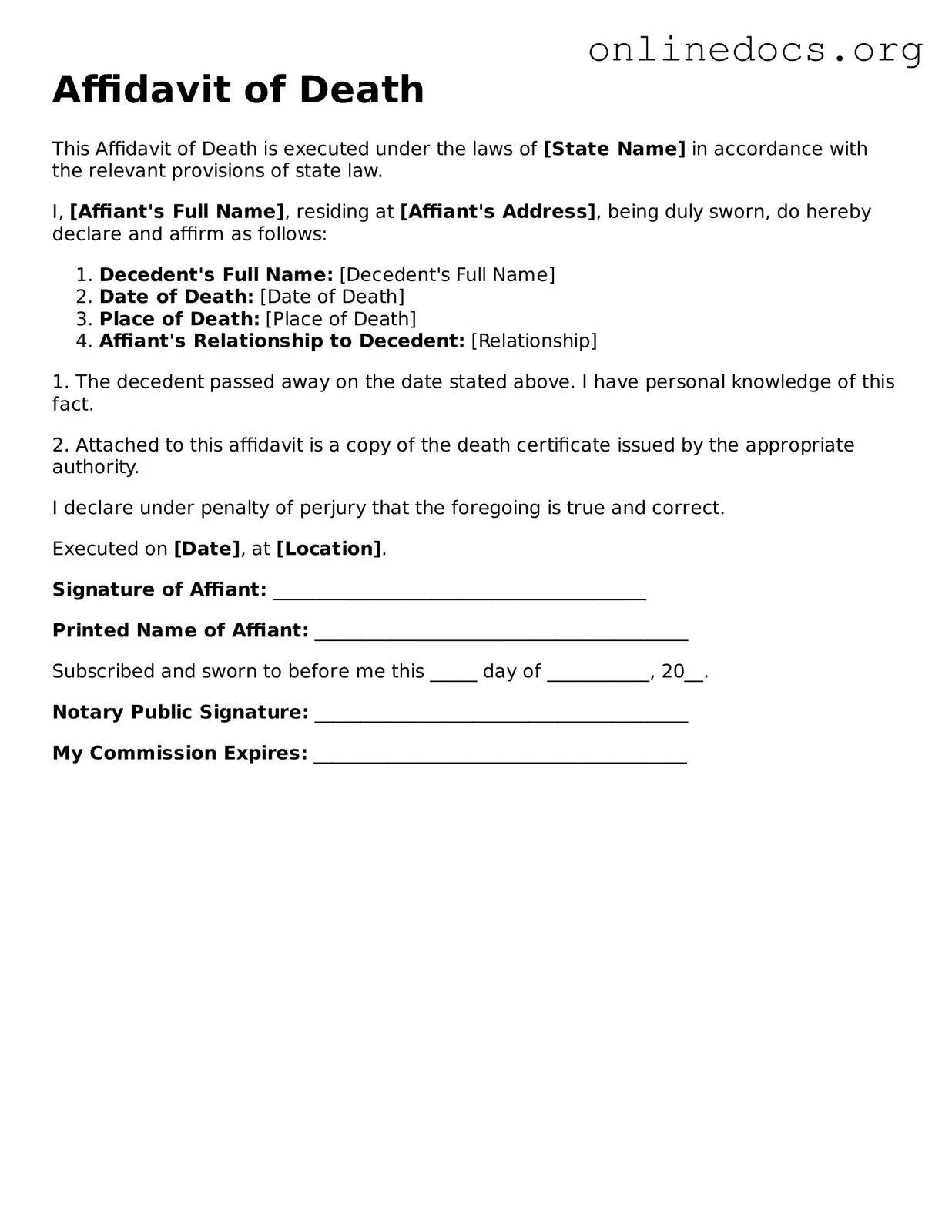Filling out the Affidavit of Death form can be a daunting task, especially during a difficult time. One common mistake people make is not providing accurate personal information. This includes the deceased’s full name, date of birth, and date of death. Any discrepancies can lead to delays in processing the affidavit.
Another frequent error involves failing to include required signatures. The form typically needs to be signed by specific individuals, such as the person making the affidavit or witnesses. Omitting these signatures can render the document invalid, causing further complications.
People often overlook the importance of notarization. Many jurisdictions require that the affidavit be notarized to verify the identity of the signer and the authenticity of the document. Neglecting to have the affidavit notarized can result in rejection by the relevant authorities.
Additionally, some individuals may misunderstand the filing process. Each state may have different requirements for where and how to file the affidavit. Failing to follow these procedures can lead to unnecessary delays or even legal issues down the line.
Another mistake is not providing supporting documentation. In some cases, additional documents, such as a death certificate, may be required to accompany the affidavit. Without these documents, the affidavit may not be accepted.
Lastly, people sometimes rush through the form, leading to errors or omissions. Taking the time to carefully review the completed affidavit before submission can help avoid these pitfalls and ensure that the form is filled out correctly.
